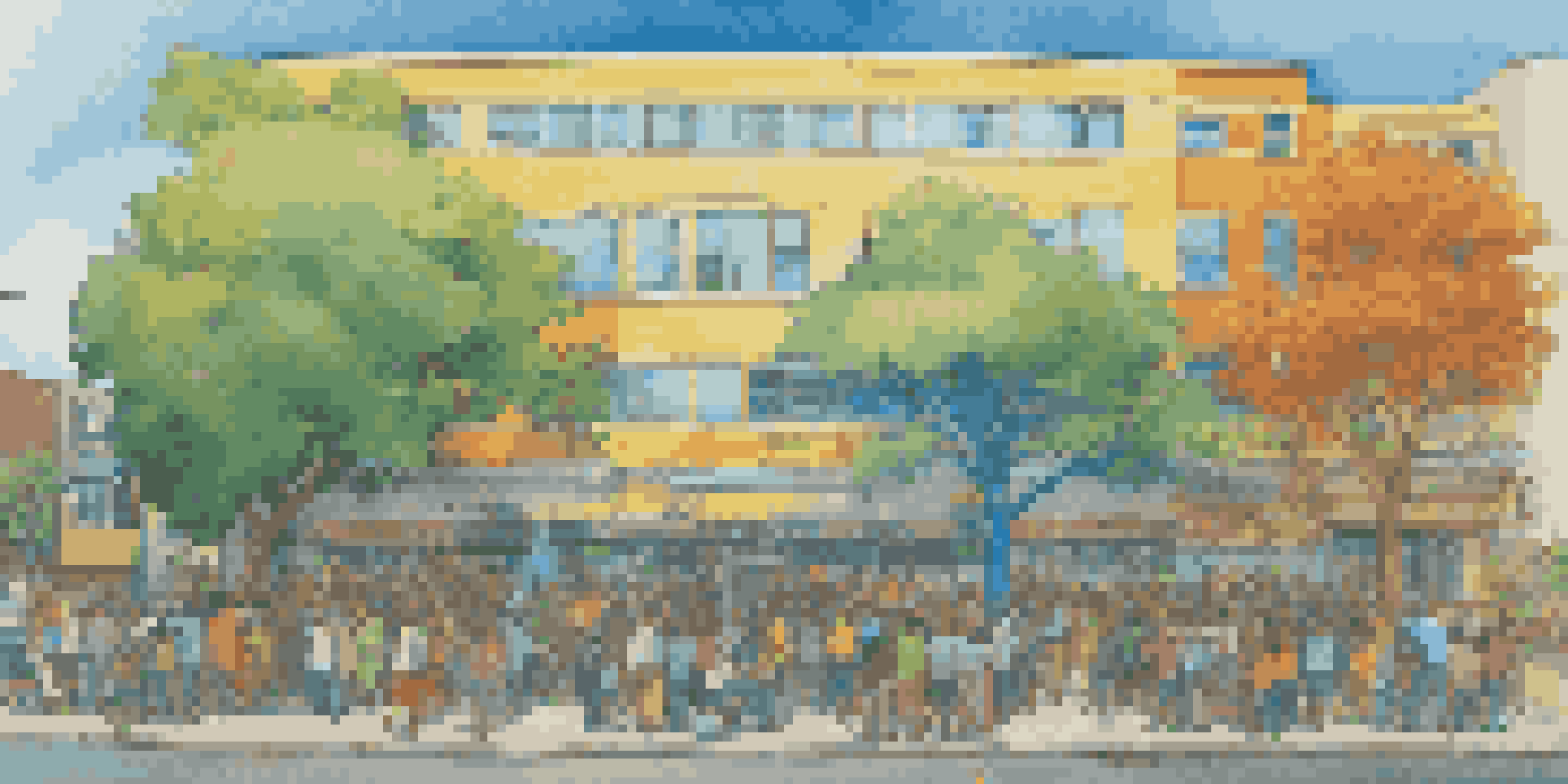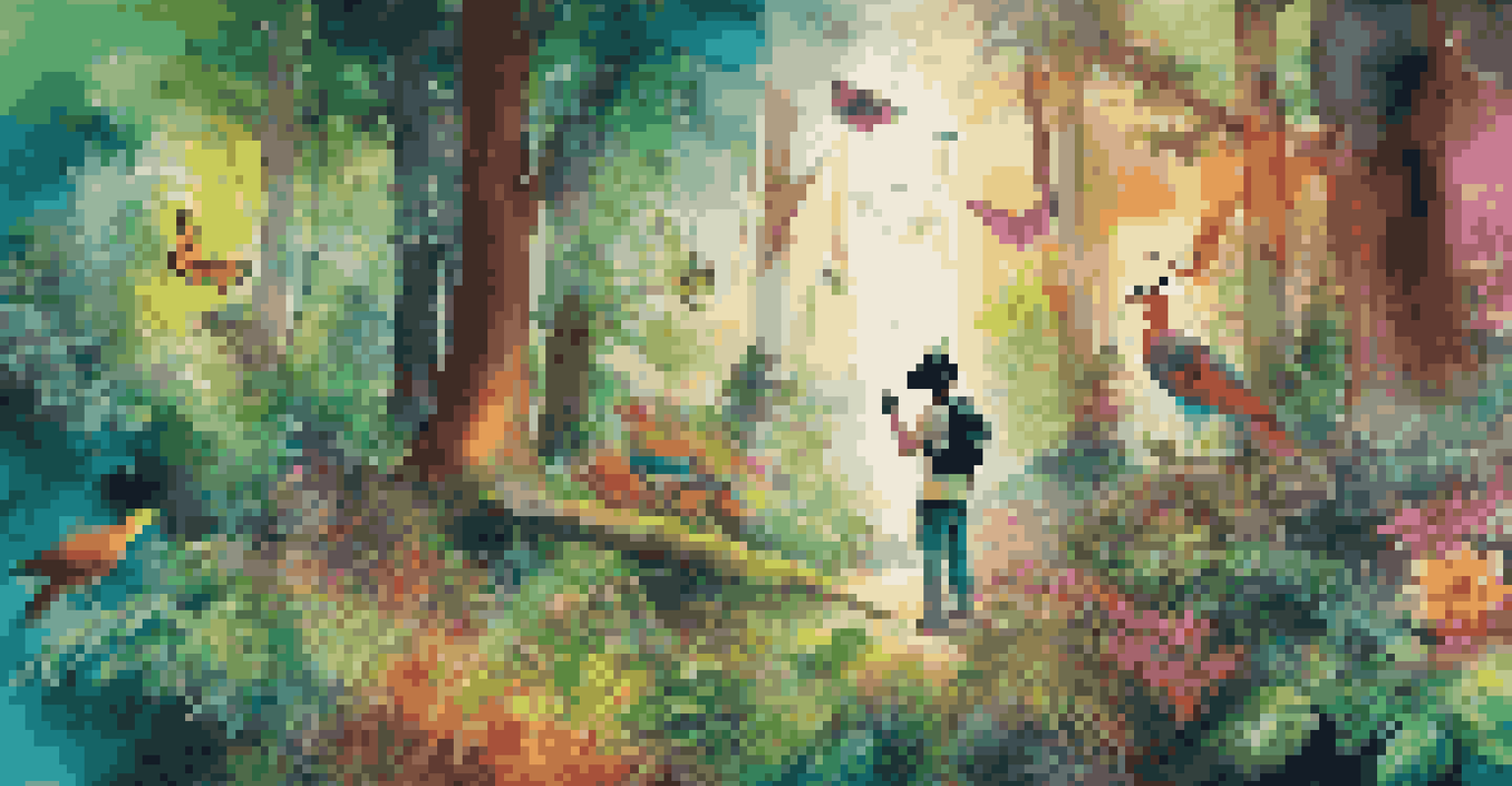Art and Climate Activism: The Creative Voice for Change

Art as a Catalyst for Climate Awareness
Art has an incredible ability to capture attention and evoke emotion, making it a powerful tool for climate activism. Through various forms such as paintings, installations, and performances, artists can communicate complex issues about climate change in relatable ways. For instance, a striking image of a polar bear on a melting iceberg can stir feelings of urgency and compassion that statistics alone might not convey.
Art is not a mirror to reflect the world, but a hammer with which to shape it.
Moreover, art invites people to engage with climate issues on a personal level. It can transform abstract concepts into tangible experiences, allowing audiences to see the direct impacts of environmental degradation. This emotional connection can encourage individuals to take action, whether it's reducing their carbon footprint or advocating for policy changes.
In essence, art acts as a bridge between scientific data and public understanding, making climate issues accessible to everyone. By harnessing creativity, artists can ignite conversations and inspire collective action towards a more sustainable future.
Prominent Artists Leading the Charge
Many artists have emerged as key figures in climate activism, using their platforms to raise awareness and inspire change. Take Olafur Eliasson, for example; his installations often highlight environmental issues, such as his famous 'Ice Watch,' which showcased melting ice blocks in urban spaces. This poignant visual representation of climate change made the issue impossible to ignore.

Similarly, Ai Weiwei uses his art to challenge political and environmental injustices. His work often emphasizes the fragility of our ecosystems and the need for urgent action. By intertwining art with activism, these artists not only create impactful pieces but also mobilize communities around the climate cause.
Art Engages Climate Awareness
Art effectively transforms complex climate issues into relatable experiences that inspire personal action.
These examples illustrate how artists can leverage their creativity to provoke thought and inspire action. By pushing boundaries, they encourage audiences to reflect on their own relationship with the environment and to consider the impact of their choices.
Community Engagement Through Art
Art has the unique ability to foster community engagement, especially when addressing climate issues. Collaborative projects, such as community murals or eco-art workshops, bring people together to express their concerns and ideas about the environment. These initiatives not only beautify public spaces but also cultivate a sense of ownership and responsibility toward local ecosystems.
The role of the artist is to make the revolution irresistible.
For instance, community gardens often serve as a canvas for artistic expression, where participants can paint murals that reflect their values and vision for sustainability. This collaborative approach not only raises awareness but also empowers individuals to take an active role in their environment.
In this way, art becomes a communal language, breaking down barriers and uniting diverse voices. By engaging communities through creative projects, artists can inspire collective action and foster a deeper understanding of climate issues.
Art in Climate Policy Advocacy
Art is not only a means of expression but also a powerful advocacy tool in climate policy discussions. Artists can amplify messages and create compelling narratives that resonate with policymakers and the public alike. For example, visual campaigns utilizing striking imagery can capture media attention and elevate climate issues in public discourse.
Moreover, art can humanize the statistics that often dominate climate discussions. By sharing personal stories through artistic mediums, artists can illustrate the real-life impacts of climate change on individuals and communities. This human element can sway opinions and motivate action from decision-makers.
Community Art Builds Responsibility
Collaborative art projects foster community engagement, encouraging people to take an active role in their local ecosystems.
Ultimately, the integration of art into climate advocacy efforts enhances the effectiveness of campaigns. It serves to remind us that climate change is not just a scientific issue; it's a human one, deeply intertwined with our shared experiences and emotions.
Digital Art and Climate Activism
In our increasingly digital world, online art has emerged as a vital tool for climate activism. Social media platforms allow artists to share their work widely, reaching global audiences and sparking conversations about environmental issues. Digital art, from animated videos to interactive installations, can engage viewers in innovative ways that traditional mediums might not.
For instance, virtual reality art experiences can immerse participants in the beauty of natural environments while highlighting the threats they face from climate change. Such experiences can evoke a strong emotional response, inspiring individuals to take action to protect these precious ecosystems.
Additionally, the accessibility of digital art allows for diverse voices to be heard in the climate conversation. Artists from various backgrounds can share their unique perspectives, enriching the dialogue around climate change and fostering a more inclusive movement.
Art Festivals as Platforms for Change
Art festivals have become significant platforms for climate activism, showcasing works that address environmental concerns. Events like the Venice Biennale and Eco Art Fair often feature installations and performances that provoke thought about sustainability and climate change. These festivals not only attract art enthusiasts but also engage a broader audience in critical conversations about the environment.
By curating exhibits that focus on climate issues, organizers can raise awareness and encourage attendees to reflect on their own environmental impact. Additionally, workshops and panel discussions held during these events provide opportunities for dialogue and collaboration among artists, activists, and the public.
Digital Art Amplifies Activism
The rise of digital art allows for broader reach and diverse perspectives in the climate activism conversation.
Ultimately, art festivals serve as vibrant spaces where creativity meets activism. They inspire not only appreciation for art but also a sense of urgency to address the pressing climate challenges we face.
The Future of Art and Climate Activism
As the climate crisis continues to evolve, so too will the role of art in activism. Artists are likely to explore new mediums and technologies, pushing the boundaries of creativity to address environmental issues. From augmented reality to immersive installations, the future of art in climate activism promises to be dynamic and impactful.
Moreover, as awareness of climate change grows, we can expect even more collaboration between artists and scientists. This cross-disciplinary approach can lead to innovative solutions and fresh perspectives on how to communicate the urgency of climate action.

Ultimately, the future of art and climate activism is bright and full of potential. By continuing to harness the power of creativity, artists can inspire change and advocate for a more sustainable world, making a lasting impact on both individuals and society as a whole.